Building digital products is a team effort; from developers writing code, and project managers overseeing delivery right down to stakeholders providing feedback.
As more and more development teams work remotely, tools that enable easy communication and collaboration are becoming a must-have.
In this guide, we’ll explore some of the tried-and-tested tools we use at ETEAM to streamline development, communication, and management across our remote development team.
Working as a global remote development team - Our story
Remote work is in our DNA. Even before COVID-19, as a software development company building digital products for clients from all over the world, virtual work has always been part of our daily lives. Following the pandemic, we extended our team to several other countries and gained additional insight into scaling remotely which we’ve already shared in this article.
Fast-forward to today and our team now spans 17 countries and four time zones. We quickly learned that to make this work, we need more than just the cutting-edge tech powering applications. We need collaboration tools that can keep our global team connected, from how we coordinate development projects and communicate with clients to how we share know-how between team members.
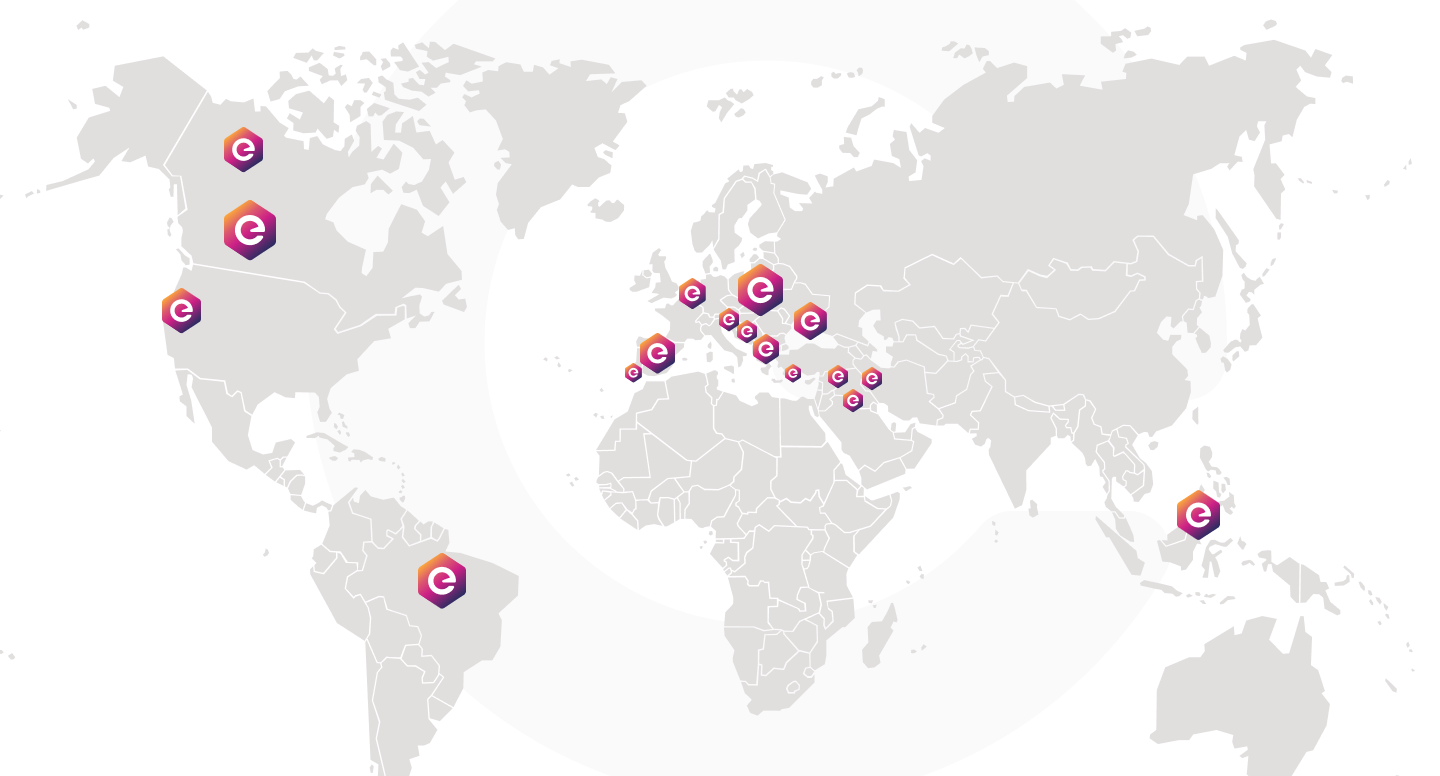
Why are collaborative tools important for remote development teams?
Imagine trying to assemble a puzzle in the dark. You might have all the necessary pieces, but without light, it's really difficult to see how all the parts fit together.
Tools work pretty much the same way, making the whole process of working together easier and more productive. Here are just a few ways remote collaboration tools assist us in our day-to-day work.
Streamline communication
As a global remote team, we work asynchronously. This means everyone needs to be able to complete their tasks even if they are not online at the same time.
Whether it’s leaving a message on Slack, sharing a file, or taking notes, remote collaboration tools keep everyone on the same page regardless of where and when.
Fast-track team and project management
Assessing workloads, setting deadlines, and monitoring progress can be challenging when team members work from different locations and time zones.
Project management tools help us stay on track and be transparent in how we assign tasks and responsibilities.
Increase development productivity
Collaboration tools not only boost productivity but also encourage knowledge sharing, a key way to build high-performing development teams.
Code review tools allow team members to collectively review and discuss issues, while automated CI/CD pipelines can lead to faster deployments and better integration between development and Ops teams.
What to look for in a collaboration tool
Now that we’ve covered the why, let’s look at the how.
Project collaboration tools should have features that make it easier for team members to work on shared goals, including:
-
Security: security is particularly important when accessing sensitive information from home. Consider tools that use two-factor authentication, access control, or encryption to keep your company data safe.
-
Integration and customization: how easily can you adapt it to your requirements or integrate it with other apps you are using? You’ll want a tool that is flexible enough to fit various use cases and enable smooth data sharing.
-
File sharing: invest in platforms that give you the ability to share, edit, and collaborate on documents, code, and files in real time.
-
Feedback: feedback is at the core of writing better code and providing better services. Look for apps that offer a full range of feedback features, whether it’s embedded instant messaging or being able to leave comments directly within files.
-
Offline access: losing work because of a bad Internet connection is never fun. The tools you use should be able to work offline and sync changes once they reconnect.
-
Reporting and analytics: look into project management and developer tools that come with reporting and analytics capabilities. Having a solid overview of the team’s activity lies at the heart of coordinating development efforts.
Our top tools to enhance development workflows and remote collaboration
As a remote development team, we rely on collaboration tools not only to bridge geographical gaps but also to work seamlessly together. From holding stand-up meetings on Zoom to documenting processes in Confluence and using ChatGPT for project management, our toolkit evolves with us.
Here are some of the essential tools we use for effective development, communication, and management.
Version control
Version control is the cornerstone of software development, with systems like Git allowing developers to manage and track code changes. GitHub is the most popular platform for working with git repositories and one of the top collaborative tools for developers due to its countless features and integrations.
We use GitHub to securely store and share software projects, keep track of changes, and enable smooth collaboration among our global team. With its pull request and peer code review features, GitHub is our go-to for giving feedback on code and keeping it bug-free.
It’s also easy to integrate with other tools we use, while add-ons provide countless customization options. For example, you can enable analytics to get daily reports on any repository and project sent to your email or Slack.
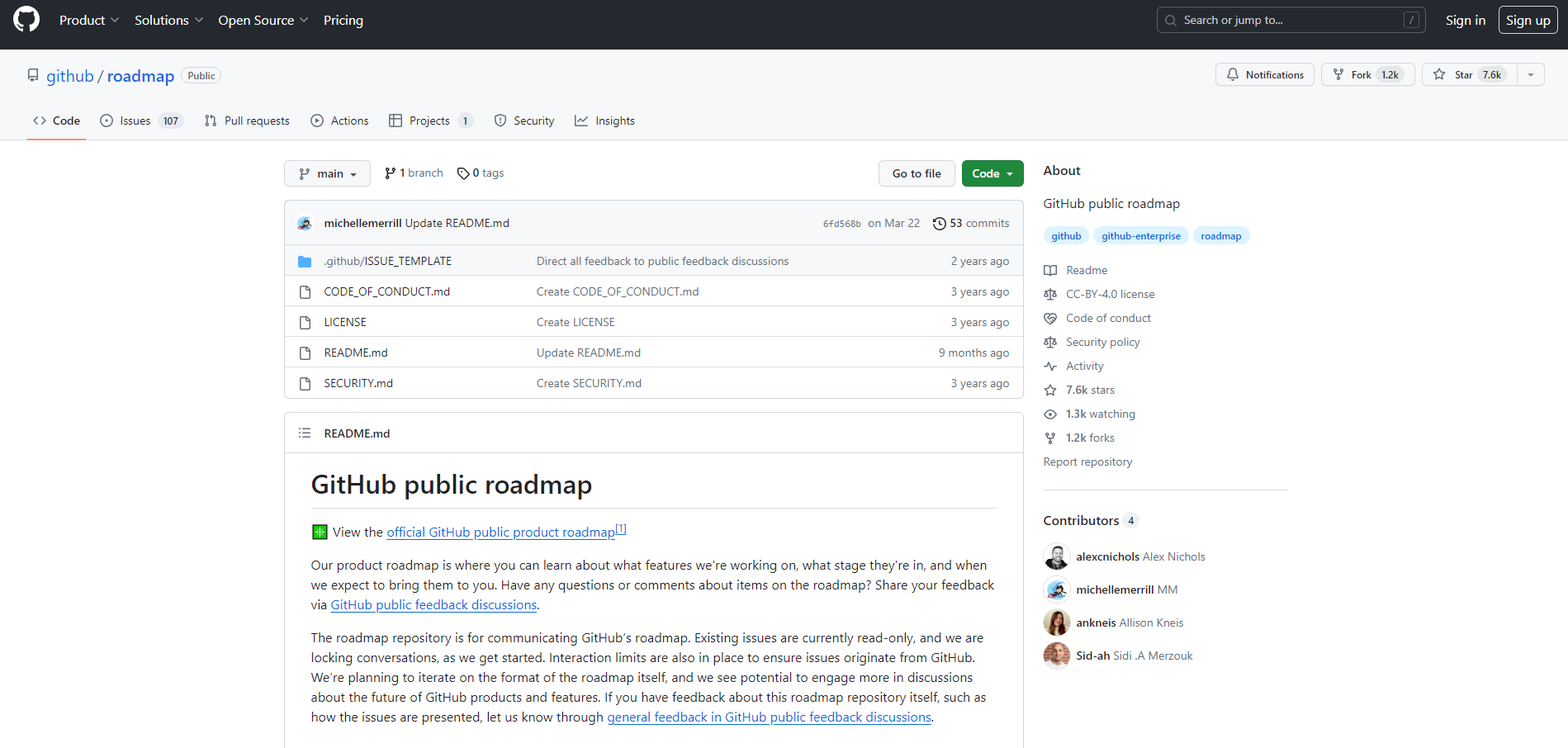
Source: GitHub
AI assistants
According to a recent GitHub survey, 92% of interviewed developers said they are already using AI-powered coding tools both in and outside of work. Rather than a thing of the future, AI is here and it’s being widely used to improve code quality, speed up development, and resolve incidents.
GitHub Copilot is a recently launched coding assistant you can install as a plugin for Visual Studio Code, one of the most popular editors. Based on the contents of your file, it can auto-generate code snippets, verify your syntax, and make context-aware suggestions.
While Copilot is yet to match the expertise of a real-life developer, we found it’s a great tool for brainstorming and double-checking your work. It also cuts down the amount of boilerplate code developers have to write, so they can focus on truly complex issues. If you want to read more on how you can boost your development workflow using AI, make sure to check out our article on the topic.
However, AI doesn’t just stop at coding assistants. Tools like ChatGPT are increasingly being used by project managers to help with documentation and paperwork, reports, meeting notes, and fostering better communication and collaboration throughout the team.
Prototyping and brainstorming
Prototyping is a great way to test your ideas before actually coding the product. We use Figma throughout product discovery to design the UI and create interactive flows that explore how a user may interact with the design.
In addition to prototyping, Figma also comes with other features that streamline the collaboration between our designers and developers and enable a smooth handover.
For example, inside each Figma file developers have access to a code panel where they can find helpful information about the designs they are inspecting, including CSS code.
Since brainstorming is one of our preferred methods to come up with new ideas and solutions, we use Miro to bring our remote team together and spark interesting conversations. The online whiteboard allows you to create lists of topics, drag and drop assets, and use sticky notes, diagrams, and images to facilitate remote brainstorming sessions.
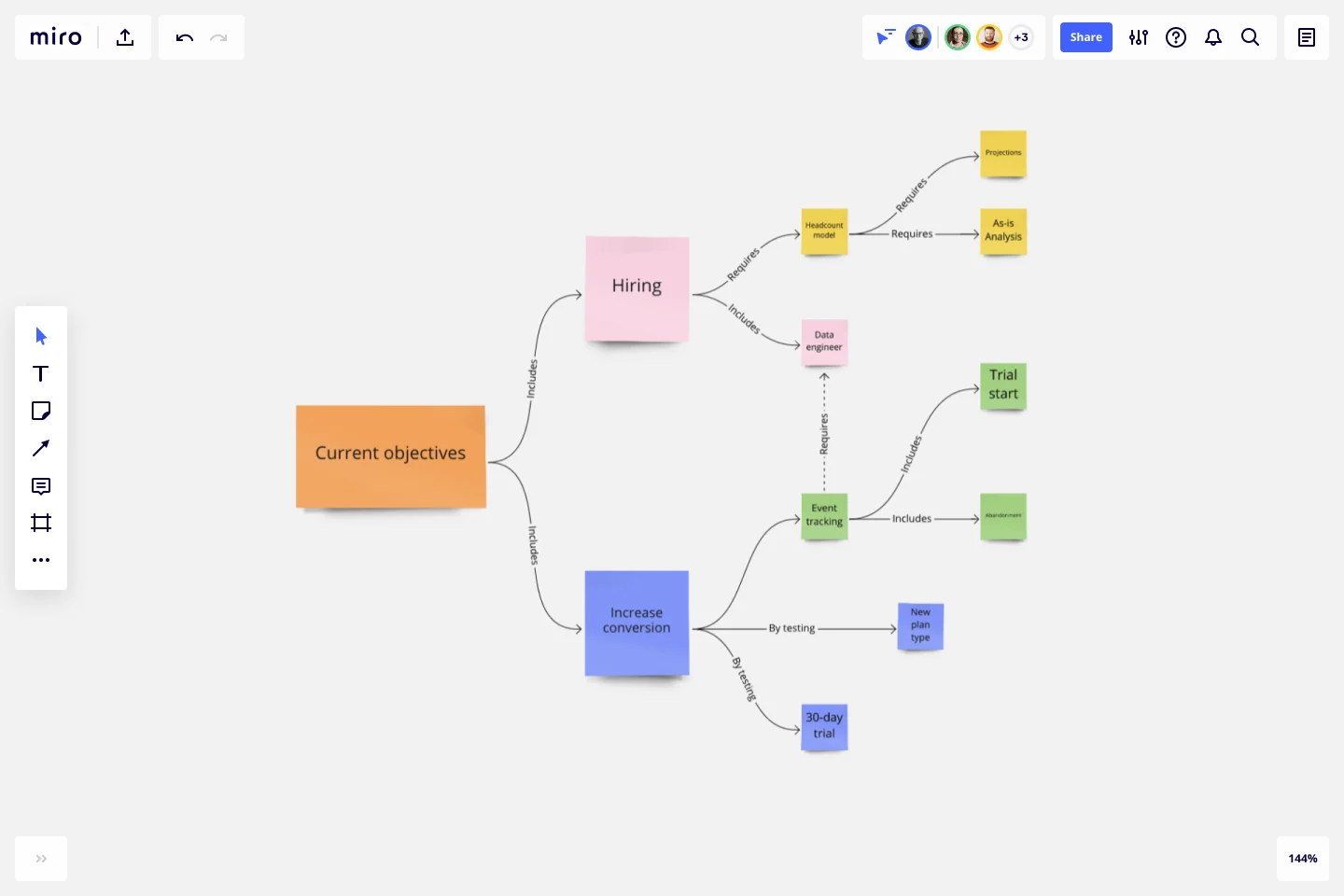
Source: Miro Brainstorming Templates
CI/CD automation
CI/CD tools act as a central hub for developers. They enable teams to identify errors early in the development lifecycle and foster a culture of shared ownership by regularly integrating changes into a shared repository and testing it for errors.
Tools like Jenkins and CircleCI help automate the building, testing, and deployment processes, enabling development and Ops teams to coordinate and be able to take swift action when an issue arises.
Notifications and alerts for important events, such as successful builds, test failures, or merged pull requests are a great way to keep everyone on the same page.
Team communication
Proper communication is crucial when you are working remotely or in different time zones. Platforms like Slack allow our team to keep in touch asynchronously so that even if a team member has a scheduling conflict or can't attend a meeting, they can still be kept in the loop.
Slack provides a unified workspace that seamlessly combines group chats, calls, file sharing, direct messaging, and third-party integrations. It’s also easy to create channels for each project we are working on and keep all the information related to that project in one place.
And because it integrates with tools like Jenkins or CircleCI, we can get notifications on build failures and quickly get people talking about how to fix them.
Zoom is another app we use to align and discuss projects, both internally and externally. From stand-ups and retrospectives to scheduling demo meetings with clients, Zoom provides a convenient solution to interact face-to-face and share your screen.
Documentation and knowledge-sharing
One of the major challenges of working remotely is keeping things organized in a way that makes sense for everyone. Knowledge repositories act as a single source of truth that team members can reference, search, and arrange into easy-to-find answers.
For this purpose, we use Confluence to document our process, store, and share important project information, coding guidelines, technical documentation, and best practices.
Confluence comes with pre-built templates you can customize for various purposes, from documenting software requirements to creating playbooks and guides. We recently started working on a Confluence technical playbook for project managers where we break down technical terms and provide a collection of wiki-style articles on software development.
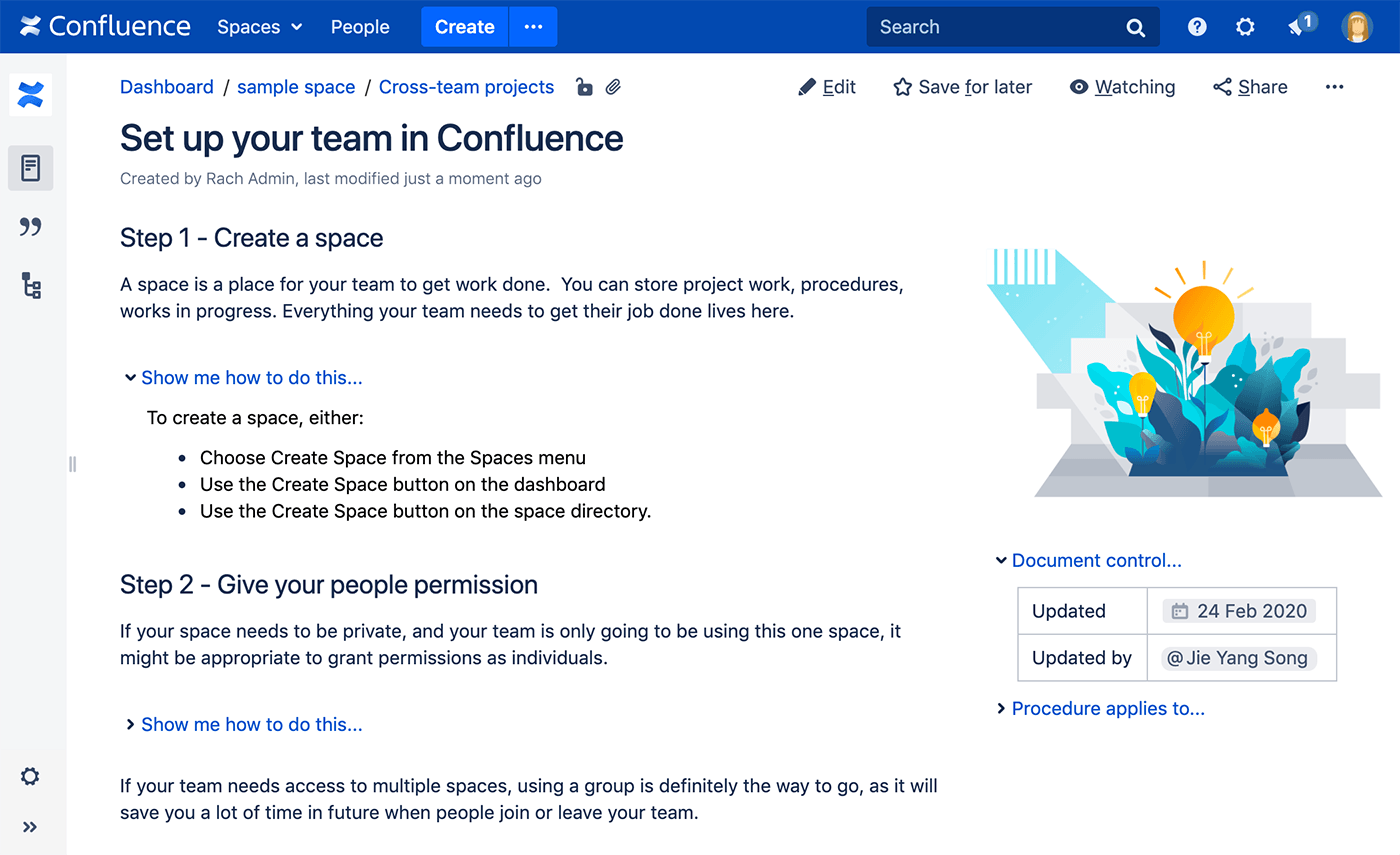
Source: Nuclino
Task and time management
As a product development agency, we manage and track multiple projects while also ensuring the highest quality for our clients. Furthermore, as a remote team, we need to make sure our engineers, designers, business analysts, and other team members can organize their work around each other.
We couldn’t do all this without project management tools.
Jira is probably one of the most well-known solutions used by software teams around the world. It provides a wide range of features designed to streamline development workflows and support Agile methods. Through Jira, you can assign tasks and plan sprints, track progress, and stay on top of priorities.
Jira comes with different ways to visualize workflows, from Kanban boards and timeline views to dependency tracking and burndown charts. It also offers intuitive reporting features, providing insights into project progress, team performance, and bottlenecks. With add-ons like Tempo, you can also log time easily with automation features.
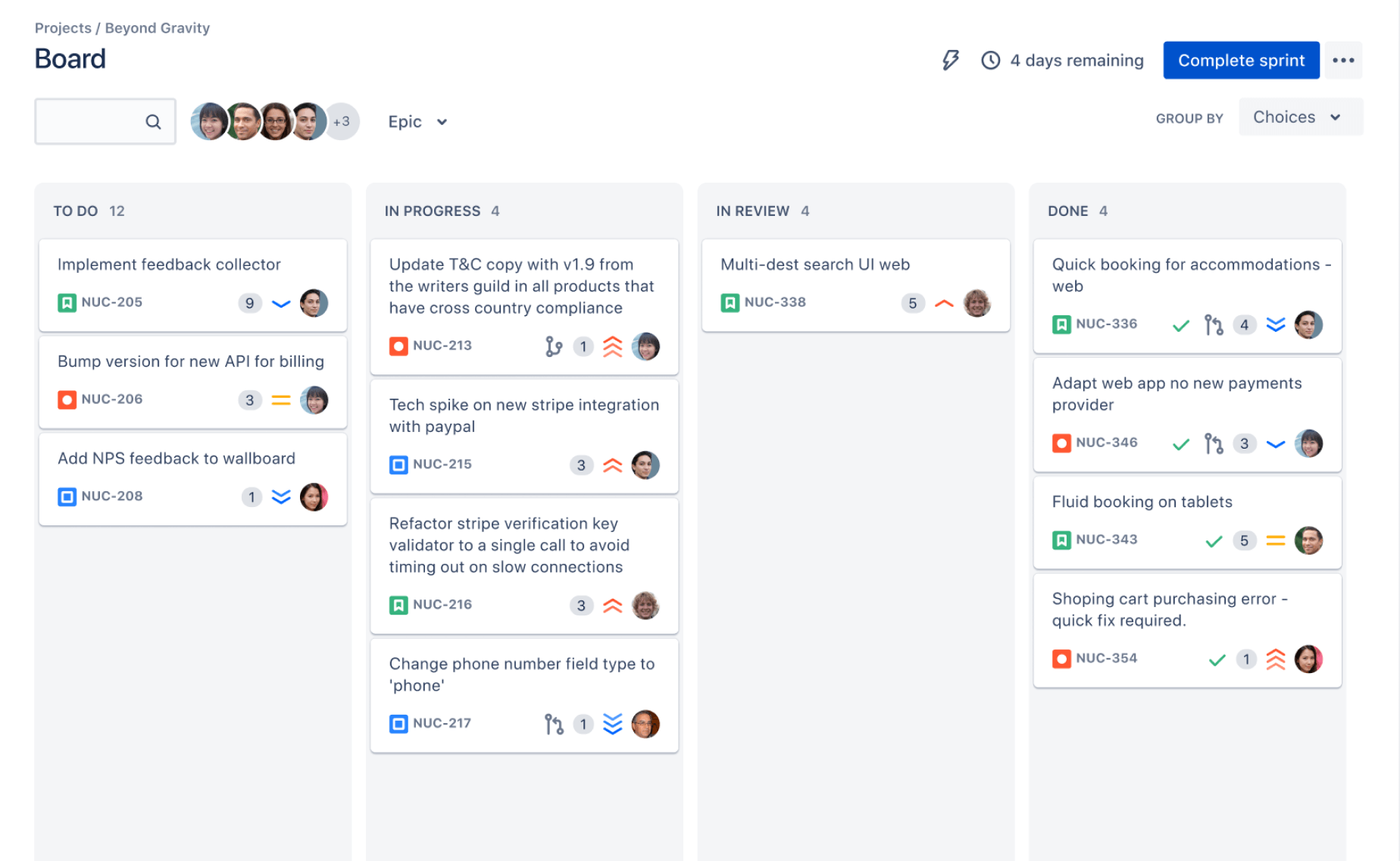
Source: Jira
Tips for implementing remote collaboration tools
Implementing collaboration tools can make a huge difference in remote team dynamics, especially when working on complex development projects. They’re a great way to boost productivity, streamline communication, and create an overall better work environment.
However, introducing new tools requires careful planning, training, and seamless integration so you can reap the full benefits of your investment.
1. Choose the right tools for your team
Before implementing any collaboration tool, take the time to assess your team's needs and workflows. Look for those that align with your development processes and team dynamics.
Are you focusing on productivity, project management, communication, or other aspects?
2. Prioritize training and support
Once you've chosen your collaboration tools, the next step is to make sure everyone can make the most out of them. Training sessions are a great way to demonstrate how they work.
Also don’t underestimate the power of support - having a designated person available for troubleshooting can significantly boost adoption.
3. Integrate with existing workflows
The last thing you want is a disjointed system that complicates rather than simplifies things. Look for tools that can be easily integrated with other software your team uses daily, especially communication apps, so you can get notified instantly of what’s happening.
4. Ask for feedback
Continuous improvement is key in refining your remote collaboration strategy. Encourage your team to share feedback on the tools regularly or create a dedicated channel where they can leave suggestions and give feedback on usability.
Conclusion
When it comes to software development, collaboration tools not only make teamwork and social interaction smoother but also make building great digital products possible.
It’s through these tools that teams like ours and others around the world manage their code, automate testing and deployment, brainstorm solutions, or track progress.
Whether you’re a project manager or a product owner, giving your development team powerful collaborative tools means equipping them for success.








